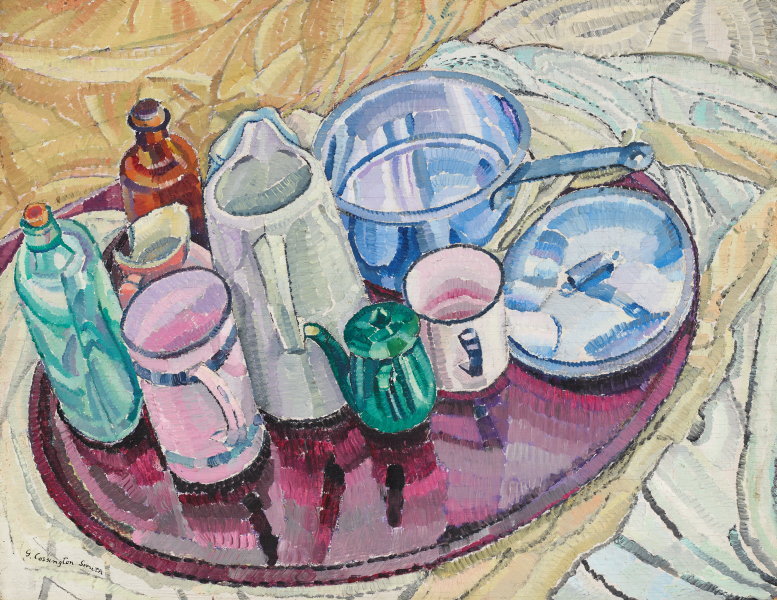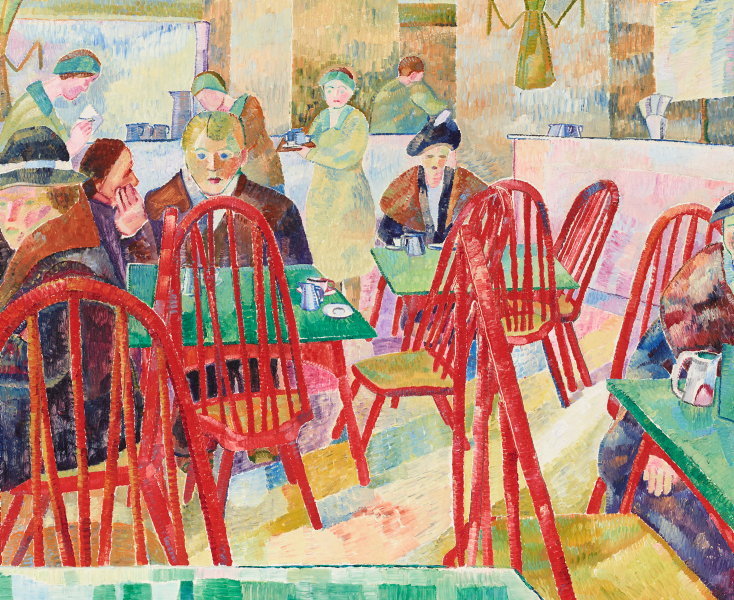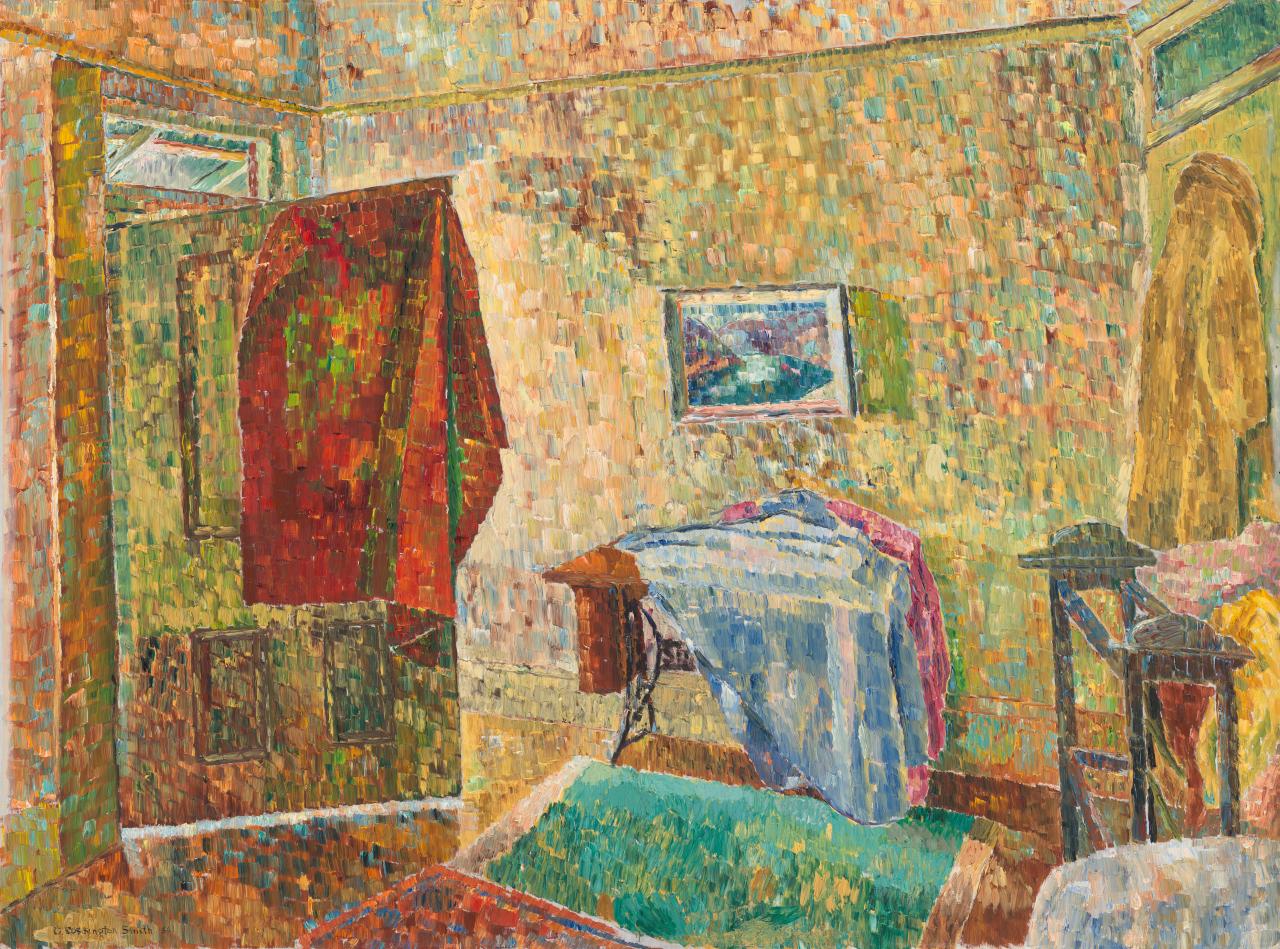Today's artist is Grace Cossington Smith (1892-1984), was born in Cossington, Neutral Bay, Sydney.
Grace was the second child born to Ernest Smith and his wife Grace, maiden name Fisher. Grace was the second of Five children, her father was born in London and was a crown solicitor and his wife Grace was the daughter of the rector and squire of Cossington, Leicestershire.
Daughter Grace attened art classes with Albert Collins and Alfred Coffey, Then later attended drawing classes with Antonio Dattilo-Rubbo who held special classes for young ladies.
Her participation in Modernism, after her van Gogh phase in the late 1910s, included a darker, more tonal phase with subjects from city life in the early 1920s, then from 1926 a return to more radical flat-patterned construction and sometimes the radical color of Gauguin. From 1937, when her friends began to own motor cars and drive her on outdoor landscape-painting excursions, Cézanne was her principal hero.




Grace was the second child born to Ernest Smith and his wife Grace, maiden name Fisher. Grace was the second of Five children, her father was born in London and was a crown solicitor and his wife Grace was the daughter of the rector and squire of Cossington, Leicestershire.
Daughter Grace attened art classes with Albert Collins and Alfred Coffey, Then later attended drawing classes with Antonio Dattilo-Rubbo who held special classes for young ladies.
With her elder sister, she sailed in March 1912 for two years in England, staying with an aunt at Winchester; she attended a few drawing classes there and some outdoor sketching classes at Speck, near Stettin, Germany, but the most lasting art influence was her memory of paintings by Watteau in Berlin.
Grace returned to Sydney in 1914 to her family, her mother's suggestion, Grace became Grace Cossington Smith, the working name for a dedicated professional artist.
She was a well-respected artist especially revered by Roland Wakelin and Roy de Maistre. She sent paintings to the annual exhibitions of the Royal Art Society of New South Wales from 1915, the Society of Artists from 1919 and the Contemporary Group from 1927. Her first solo exhibition was in 1928 at the Grosvenor Galleries, then, from 1932 to 1971, every three or four years at the Macquarie Galleries.
Her participation in Modernism, after her van Gogh phase in the late 1910s, included a darker, more tonal phase with subjects from city life in the early 1920s, then from 1926 a return to more radical flat-patterned construction and sometimes the radical color of Gauguin. From 1937, when her friends began to own motor cars and drive her on outdoor landscape-painting excursions, Cézanne was her principal hero.
From 1914 Grace had painted in a small studio hut in the garden, beyond the tennis lawn. Her mother died in 1931, her father in 1938, and she became head of the Cossington household. A larger well-lit studio was added to the house, adjacent to her large bedroom.
From 1914 Grace had painted in a small studio hut in the garden, beyond the tennis lawn. Her mother died in 1931, her father in 1938, and she became head of the Cossington household. A larger well-lit studio was added to the house, adjacent to her large bedroom.
While her art was mostly private on the subject until the 1930s her other paintings often expressed the general excitement and turbulence of big-city life, including ballet and musical performances. However, her most moving works are the late interiors of Cossington. After a visit to Europe in 1949-50 (Grace, based in Sussex, sketched English cathedrals and visited Italy—Florence for Fra Angelico and Assisi for St Francis) one sister stayed in England. In 1962 her favorite sister died after six invalid years at Cossington. She now lived alone and the house so insistently filled with memories and affections became the principal subject of her art, showing God-given golden light entering doors and windows from the verandahs and the leafy garden, spreading into corners, corridors, and cupboards.
http://adb.anu.edu.au/biography/smith-grace-cossington-8469



https://www.google.com.au/search?q=Grace+Cossington+Smith+works+of+art&safe=active&rlz=1C1CHZL_enAU760AU760&source=lnms&tbm=isch&sa=X&ved=0ahUKEwjZ8ryF5O_YAhUHmJQKHQucAwYQ_AUICigB&biw=1360&bih=637#imgrc=2rG8ws4QLjeHVM:
Grace had an unusual way of painting, very modern for that time, but I feel that she developed her style which is important to be able to say, Oh yes this artist is Grace Cossington Smith.
Have a great day and stay cool, if you are living in Melbourne. 😎


Comments
Post a Comment